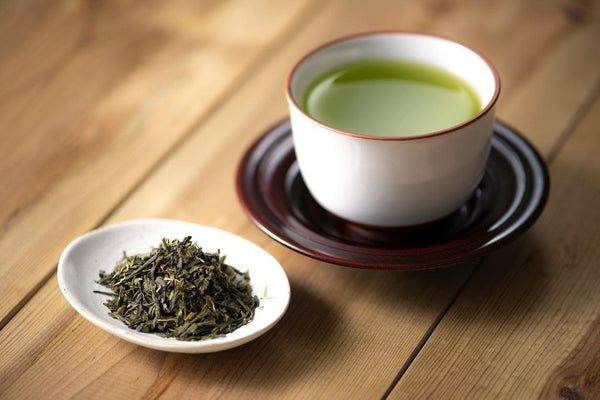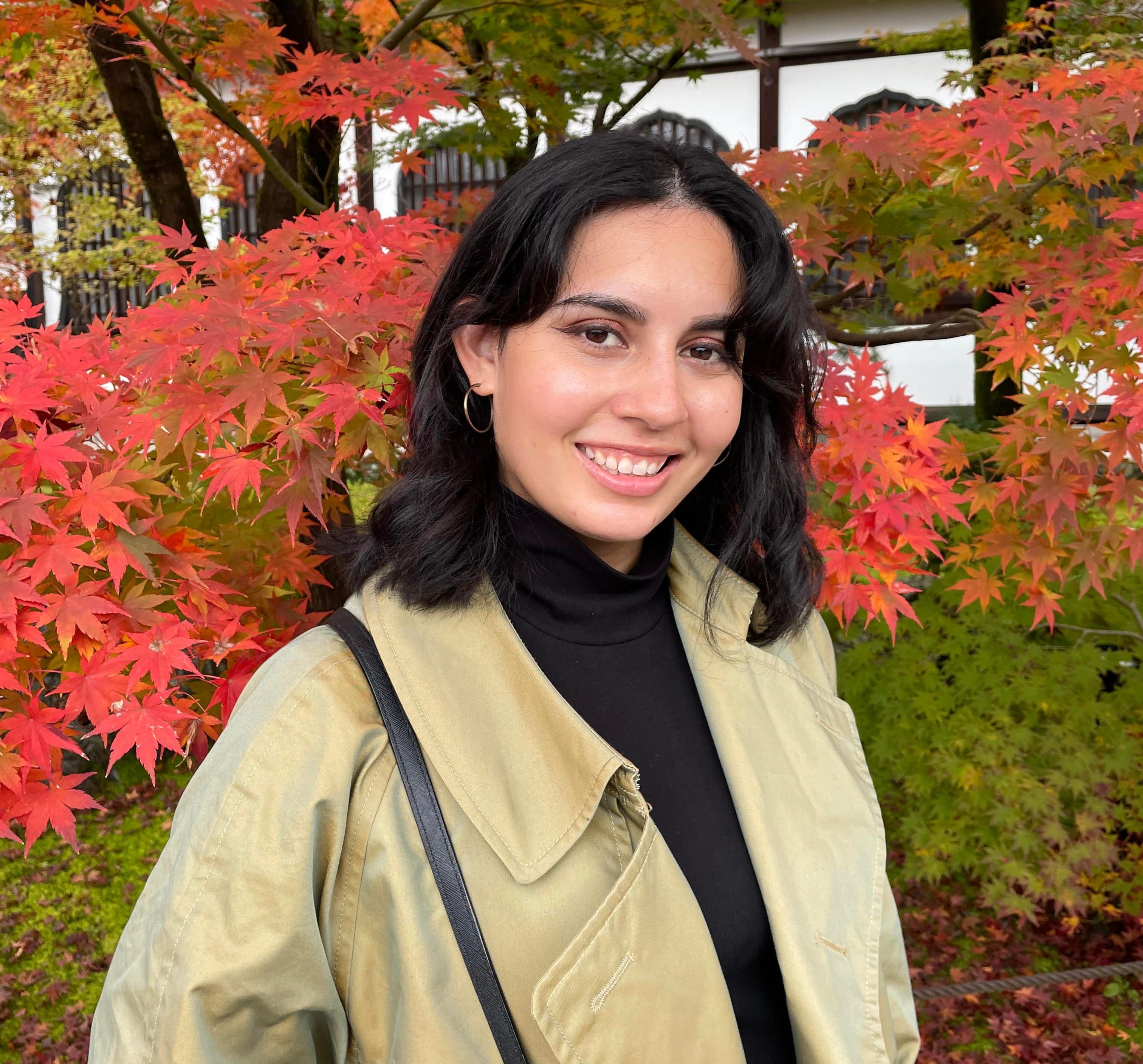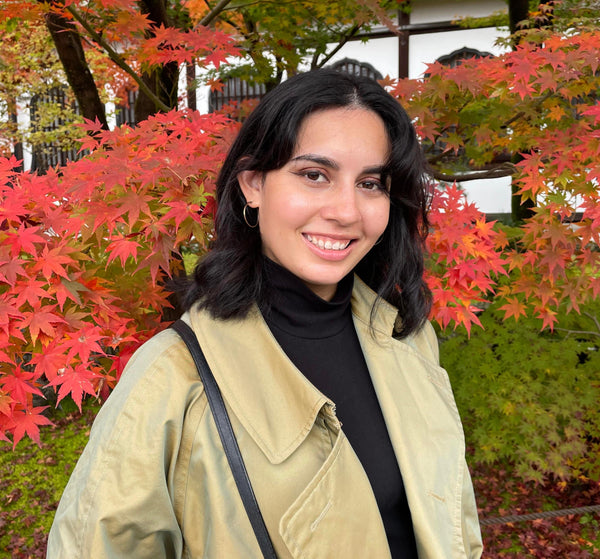
Jump to:
If you’re familiar with Japanese green tea, then it’s highly likely that you’ve come across Sencha before. Sencha is the most common type of green tea available in Japan and for many good reasons – it’s easy to drink, packed with unique umami flavor, and pairs well with many foods.
What makes sencha special among Japanese green teas, and why is it such a go-to green tea for Japanese people? If you’re a green tea lover or are curious about Sencha, keep reading because we’ll answer those questions and more as we cover everything you need to know about this delicious Japanese Sencha green tea.
What is Sencha?

Sencha is a kind of Japanese green tea and is by far the most common type. In fact, sencha makes up about 75% of all Japanese green tea production. It is characterized by having a bright green color, being full of umami flavor, and being easy to drink.
Sencha leaves are grown in an open field cultivation style and are exposed to plenty of direct sunlight. This method of growing sencha green tea leaves provides it with its proper taste, aroma, and color. This way of cultivation gives sencha leaves the moderate astringency yet refreshing taste that Sencha is known for.
While Japanese green tea leaves all come from the camellia sinensis plant, the growing and cultivation methods result in each kind of green tea having their own unique flavor, color, and astringency. This same sentiment also applies to sencha.
A brief history of Sencha
Green tea is believed to have been introduced to Japan from China during the Nara period 710-784 AD. However, tea culture really began thriving during Japan’s Edo period (1603-1868) when it was officially used by Shogunates during tea ceremony and enjoyed by the samurai class. During the Edo period, green tea, including sencha, also became less of a luxury item, meaning that common people could enjoy it.
A farmer from Kyoto named Nagatani Soen also discovered a way to brew and manufacture Sencha to have its vibrant green color that it is known for during the Edo period. This method is known as Aosei Sencha Seiho and is the standard method for how sencha is made in Japan today. Thus, Nagatani Soen is said to be the ‘father of Sencha’.
How is Sencha made?

In our previous article about Japanese green tea, we explained exactly how Japanese green tea is made and outlined each step of the process. Without going into too much detail in this article, making drinkable and tasty sencha can be quite a lengthy process.
High-quality sencha leaves are picked around the first tea leaf picking season of the year, which typically takes place in April. Once the leaves are picked, they must be steamed, rolled, kneaded, and dried. They also go through a special process known as gogumi where the tea leaves are sieved, heated, and dried before they are packaged and shipped out. Depending on how this process is performed, the flavor of the tea can totally change.
Types of Sencha
There are two main types of Sencha sold in Japan. They are known as Sencha and Fukamushi Sencha. The difference between these two teas lies in how long the sencha leaves are steamed for. The amount of time that the leaves are steamed for is the biggest factor that determines the flavor of sencha.
Fukamushi sencha, or deep steamed sencha is steamed for 2 to 3 times longer than standard sencha, which gives it a deeper green color and less astringent flavor. The leaves of fukamushi sencha are smaller in size since they are broken down more when steamed. Fukamushi sencha also brews quicker than regular sencha since the leaves have been steamed longer.
Where is Sencha made?

5 regions in Japan make up 70% of Japan’s green tea cultivation. Four out of five of these regions also make up the bulk of Sencha production in Japan. These regions are Shizuoka, Kagoshima, Mie, Kyoto, and Miyazaki.
Shizuoka, which produces more than 40% of Japan’s green tea is also the main producer of Sencha. Shizuoka ranks first in Japan for both green tea cultivation area and tea production volume.
Following up after Shizuoka in terms of both green tea and specifically, sencha production is Kagoshima. Since Kagoshima has a warm climate and many flat areas, it is a great place for cultivating tea leaves. Tea leaf picking season can also take place relatively early in the year in Kagoshima, around the beginning of April.
Mie, which is the third largest producer of tea in Japan is also responsible for producing fukamushi sencha. In fact, most fukamushi sencha production takes place in Mie.
In Kyoto, around the Uji area, which is primarily famous for Uji matcha, high-quality sencha production is also in abundance. Most of Uji’s tea cultivation is actually for high-quality sencha, but gyokuro and tencha, which are the leaves used for making matcha are also grown here.
Coming in at fifth place in terms of Sencha production quantity is Miyazaki. Similarly to Kagoshima, Miyazaki has the ideal land and weather set up for tea cultivation.
What does Sencha taste like?

Sencha green tea can be described as having the most typical Japanese green tea taste. It has elements of bitterness, astringency, umami, and sweetness, all with a pleasant aroma. Many people describe sencha as having a refreshing or fragrant flavor. We should also not forget that sencha is a tea full of a specific umami flavor that cannot be found outside of green tea. When sencha is brewed in the correct temperature water, the umami of the tea really comes out and is at its flavor peak.
Caffeine Content
Sencha is a green tea after all, so it does contain caffeine. However, it only contains about a third of the amount of caffeine as coffee. Sencha contains 20mg of caffeine per 100ml, while coffee contains 60mg of caffeine per 100ml. If you are worried about the caffeine content of sencha, you can also cold brew it and the amount of caffeine present in the tea will decrease.
It is recommended that healthy adults consume no more than 400mg of caffeine per day, so since sencha is well within this range, you can enjoy up to 2 liters of it per day if you so desire.
How to enjoy Sencha

In order to have sencha in its most ideal, umami-packed state, knowing how to brew it properly is important for enjoying it. When brewing sencha, we recommend paying attention to four factors:
- The amount of tea leaves – for two people, use 4g of loose tea leaves (2g per person) to start with. Once you are used to the flavor of sencha, you can adjust this amount to your taste.
- The amount of water – add a little more than 2 cups of water (200ml) to the teapot.
- The temperature of the water – heat the water up to 70°C. Avoid using water that has come to a complete boil in the kettle. Let it cool down for a bit before using it to brew sencha.
- The brewing time – After pouring the hot water into the teapot, close the lid and let the tea brew for 30 seconds to 1 minute. If you let it brew for too long, the flavor may become too bitter whereas if you don’t brew it long enough, the flavor will be quite light.
Once you have correctly brewed sencha, it is recommended to pour the tea into a teacup, and then into another vessel such as a yuzamashi (Japanese tea bowl) or separate cup, and then pour it back into the original teacup. By transferring the tea into separate vessels, the temperature of the tea is said to drop in temperature by 10 degrees each time, which not only makes the tea easier to drink but also increases the umami component of the tea.
For the second brew of tea, pour the hot water directly into the teapot, allow it to steep, and then pour it directly into the teacup and enjoy. The flavor of the sencha will be different in the second brew compared to the first, so have fun comparing and contrasting the differences between the two brews.
What kind of food pairs well with sencha
Green tea not only serves as a palette cleanser but it also is served with meals as it enhances the flavor of Japanese cuisine. Generally, sencha pairs well with most Japanese cuisine like sushi, miso soup, soba, and so on. Its natural sweet and astringent flavor also pairs well with traditional wagashi, cakes, and chocolate. If you're looking for suggestions to pair sencha with, then check out our article on different Japanese wagashi.
Fukamushi sencha, on the other hand, has a deeper flavor than standard sencha, so it pairs particularly well with fried foods. The strong flavor of the tea balances the rich flavor that comes from fried foods, so it is highly recommended to pair fukamushi sencha with Japanese foods like tempura.
Benefits of drinking Sencha

Sencha is full of many beneficial ingredients for our bodies. These ingredients include polyphenols, catechins, caffeine, L-theanine, potassium, tannins, sodium, and calcium.
The polyphenols in Sencha attribute to lowering cholesterol levels, blood sugar, and blood pressure. Polyphenols are also said to have anti-aging effects since they are high in antioxidants.
The catechins present in sencha help to prevent tooth decay and bad breath, while L-theanine, a type of amino acid, increases the neurotransmitters GABA and dopamine, which relieve anxiety, and alpha waves in the brain, so it has a relaxing effect on the nerves.
When to drink Sencha
Drinking sencha after meals helps to suppress any sudden rise in blood sugar. Since the polyphenols present in sencha help to lower blood sugar, this means that they also can prevent the rapid absorption of carbohydrates into the bloodstream after meals.
It is also said that drinking sencha instead of coffee or black tea during work is good because it has a relaxing effect. Really, you can enjoy sencha whenever you want. If you’re caffeine sensitive, it might not be a good idea to drink sencha close to your bedtime.
Sencha vs Matcha

Since sencha and matcha are both popular kinds of Japanese green teas, you may be wondering if there are any differences or similarities between them. Sencha and matcha tea leaves both come from the same kind of plant, the camellia sinensis, but they are made with different cultivation methods.
Sencha leaves are grown in an open environment with plenty of exposure to sunlight, while matcha is made from Tencha leaves, which are grown in shaded areas and are finely ground into powder after cultivation. This fine powder is what results in matcha powder.
Matcha also has a quite different flavor profile, astringency, and caffeine content from Sencha. This is because Tencha leaves are covered while being grown. This process suppresses the production of catechins, which is the source of astringency for green tea. Matcha also contains a large amount of theanine, which is a component of matcha umami.
Sencha vs Bancha

Bancha is another kind of Japanese green tea that often gets confused with Sencha, even by Japanese people. The difference between the two lies in the time that the tea leaves are harvested. Sencha leaves are always harvested in the first, and sometimes second tea picking season(s) of the year, while Bancha leaves are harvested during the last picking season of the year.
Both these teas are similar in flavor because they both use the same tea leaves and the method of cultivation is also the same, but the quality of the leaves is different. Since sencha leaves are harvested earlier in the year, their quality is much higher because they are fresh leaves. On the contrary, bancha leaves are picked from the leftover leaves during the last tea leaf harvesting season, so they can still become tasty tea, but they might not be of peak quality anymore. Bancha leaves also tend to be used for making other kinds of Japanese green tea like hojicha or genmaicha.
As far as taste is concerned, Bancha is often described as having less of an astringent flavor than sencha while being slightly fragrant. Since bancha is a bit lighter in flavor too, it is often enjoyed as a tea after meals by Japanese people.
Where to buy Sencha
When purchasing sencha, you can find it sold in loose leaf, tea bag, or even bottled and ready-to-drink just about anywhere ranging from convenience stores, supermarkets, high-end department stores, and specialty tea shops in Japan. If you want to purchase sencha outside of Japan, you may be able to find it in your local Japanese or Asian grocery stores, or even at Costco. If you can’t find sencha anywhere and can’t make a trip to Japan anytime soon to buy the good stuff, you can of course purchase it online. For high-quality and authentic sencha straight from Japan, check out our collection of high-quality sencha at Japanese Taste.
Storing Sencha
Storing tea correctly, including sencha, will make a huge difference in the quality of the taste as well as the shelf life. Pay attention to the best-by date – this is the date set by the manufacturer that ensures that the tea will be in its best state before that date. If the tea is past its best-by date, it is still safe to consume, but it might not be at peak quality anymore. It is also recommended to store sencha in a dark, cool, and dry place away from sunlight and humid areas. If possible, storing sencha in the refrigerator will keep it at peak quality for longer.
Have you tried Sencha green before? Let us know how you liked it in the comments below!


0 comments